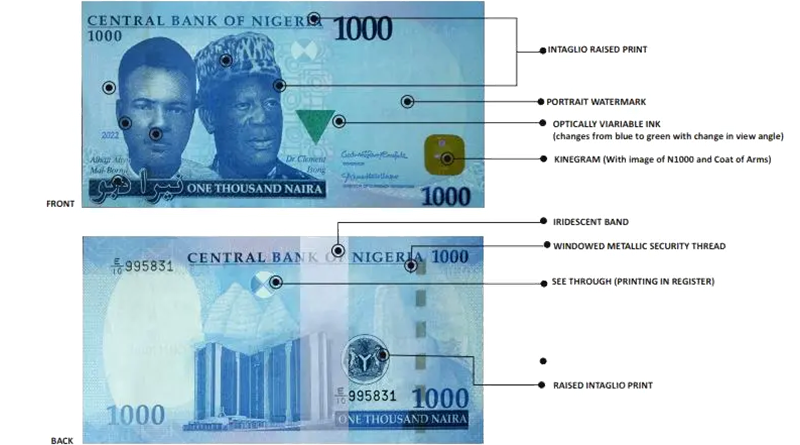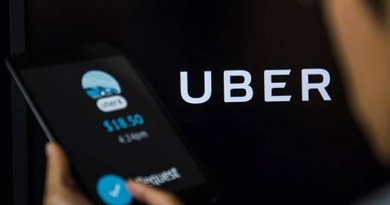How to identify fake Naira notes and genuine Naira notes and security features of the new naira Notes
The Central Bank of Nigeria has released the security features of the ne Naira notes which makes counterfeiting difficulty and easy for citizens to identify fakes. It will be recalled that while launching the new Naira Notes, the President, Mohammadu Buhari, had stated that the new notes will have embedded unique security features that will make them difficulty to counterfeit.
One can differentiate a genuine from a fake Naira note from with the following security features: Texture, Gold Foil, testing the solubility of the ink and colors in water or other solids, examining the ribbon/thread that runs from top to the bottom of the notes and lastly, use of mercury bulbs.
1. First, examine the texture of the notes and be sure that it is not soft and the images not blurred
You have the right to be worried, reject the note, and ask for a replacement if the texture of the Naira note is soft and the image therein appears dull. This means that whenever you are engaged in a transaction, you should pay attention to how the money is handled.

2. check for the GOLD FOIL on the Right Side of the Naira note
On the right side of the N1000 note, just next to the CBN governor’s signature, there is a gold foil. The gold foil on a fake note will immediately peel off if you scratch it, whereas the gold foil on an authentic note will not.

3. Use water or any other liquid to prove the ink and colors
Using water or another liquid, you can tell false money apart from real money. Scammers print counterfeit currency, and the colors they use to do so are soluble in water and some other liquids. If you are unsure about a Naira note’s authenticity, carefully clean it with water or gasoline. If the currency is counterfeit, the colors will change right away. The counterfeit money’s colors will fade away just like a watercolor painting would.
Again, the paper becomes ruined the moment you submerge it in water. It will get rough and resemble paper mache more. However, when submerged in water or any other liquid, the true note won’t appear like this.

4. Inspect the ribbon or thread that runs from top to the bottom of the Naira note
All Naira notes have a ribbon-like thread going from top to bottom that resembles a thread. This thread is palpable in authentic notes. On older Naira notes, it is more pronounced. However, there is something that appears to be the thread in bogus notes but is actually not. What is there in the fake notes is merely a straight-line painting that mimics the thread on the genuine notes. The artwork will peel off if it is scratched, just as the solver panel on recharge cards.

5. Use mercury Light to examine the notes
Naira makes a note of several characteristics of the paper that are invisible to the naked eye. Only original Naira notes have these traits, and only mercury bulbs can be used to see them. For instance, a real N1000 note will display a glowing 1000 (in digits) printed across it when exposed to the light from a mercury lamp. Similar rules apply to smaller denominations.

As stated by the CBN Governor, Godwin Emefiele, the new Naira notes will force Nigerians to transition to a cashless society. With this upgrade to the policies now in place, the economy’s use of real cash will receive more attention. We anticipate seeing this new currency in use all around the nation in a few weeks.

According to the President and the CBN Governor, the new Naira notes are all printed locally by the Nigerian Security Printing and Minting Plc, making Nigeria one of the few countries (actually four countries) in Africa that now print their currencies locally.




